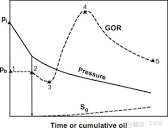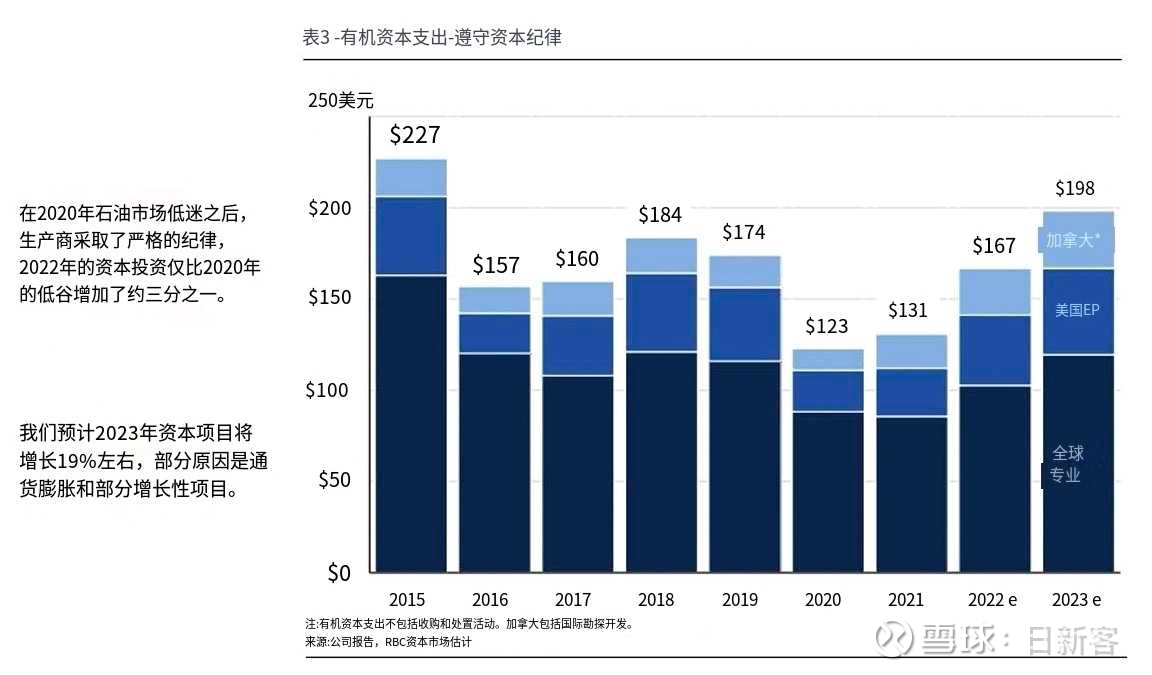Since the pictures and texts of this mode are more compatible and easier to understand, I will post a short article. 
The figure above shows that after 2020, the gas-oil ratio of the Permian Basin in the United States has dropped significantly for two consecutive years. Generally, as the formation pressure releases over time, the proportion of associated natural gas will increase, because the under-pressurized heavier oil will remain in the rock pores. There is a lot of professional knowledge involved in the reduction of gas-oil ratio, but we can imagine that when a bottle of Coke is just opened, the gas will be sprayed out immediately, and it will become sweet water after a period of time. The figure below reveals the gas-oil ratio (GOR ) and the functional relationship between formation pressure (Pressure).

The Permian Basin is also the main producing area with the strongest oil and gas production in the United States. Now even the Permian Basin has this situation. It is conceivable that the prospect of shale oil production is not as optimistic as predicted by mainstream institutions. Of course, the decline in the ratio of gas to oil is also related to the “sweet spot” of oil and gas preference drilling after the collapse of oil prices in 2020, but the two are not contradictory.
The picture below is more interesting↓

FT chart showing soaring fracking costs, with significant increases in rig costs (middle) and production costs (right). Drilling costs in 2022 are 30% higher than in 2021 and are expected to
Prices will rise another 12% in 2023, and the average cost of drilling a shale well in 2019 was just $7.3 million, but this year it may cost $9 million. The price of drilling 100 feet has risen from $75,000 in 2020 to $100,000.
Wait, how much will U.S. capital spending increase in 2022?

Compared with 2020, the global capital expenditure has only increased by 30%! The United States is even less, only 10% to 15%. High drilling costs and labor costs have plagued shale oil companies looking to return profits to investors, but a new problem has arisen, as depletion slopes become steeper and new wells become less efficient, requiring new wells to be drilled each year. Multiple wells to maintain production.

Even though more desserts have been drilled after 2020, it seems that the production of new wells has peaked now. (The left picture shows the initial production in the first 30 days, and the right picture shows the final estimated harvest volume)

$120 didn’t dig a well for you, and $80 gave you a crazy well? It’s unlikely, is it?
What will happen if the United States, the largest oil-producing country, suspends or even stops the shale revolution?
$CNOOC(00883)$ $Xinchao Energy(SH600777)$ $Zoman Petroleum(SH603619)$
There are 50 discussions on this topic in Xueqiu, click to view.
Snowball is an investor social network where smart investors are all here.
Click to download Xueqiu mobile client http://xueqiu.com/xz ]]>
This article is transferred from: http://xueqiu.com/9488028880/240268686
This site is only for collection, and the copyright belongs to the original author.